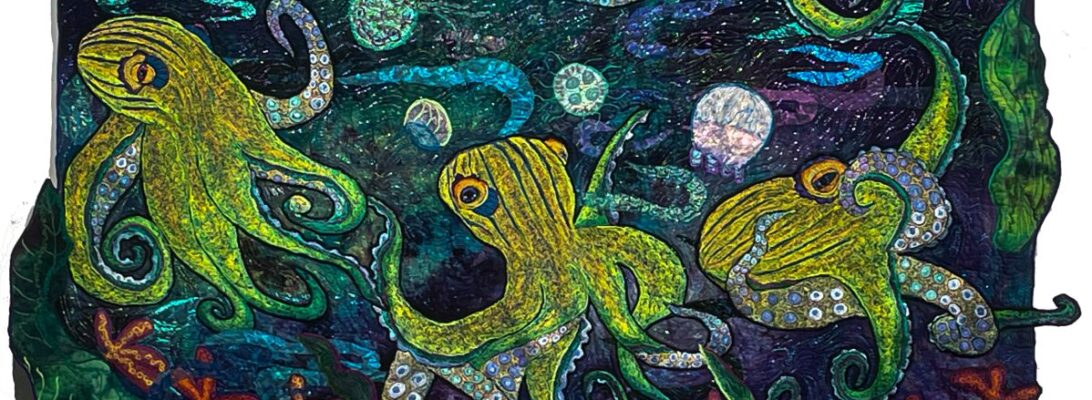Let’s start this by saying, it’s just one woman’s opinion. I mean no disrespect to anyone.
It’s been a tough couple of weeks. Two weeks ago I had to change web hosts. It was an ungodly mess and I did almost nothing except try to fix it. I wrote that the dog had eaten my homework which is why I didn’t have a new blog up.
This week I can almost honestly say that dinosaurs broke into my computer room, pooped in my computer, packaged me up in a box and sent me to California where I kept hearing a cat near by. That bad.
We got it straightened out. It’s three weeks of my life I’ll never get back, so I am deeply grateful for the guy at FixRunner who found me an answer within an hour.
And I don’t have much work to show. So I thought I’d talk about something a lot of us are finding distressing.
I have some problems with AI. I have not, in fairness, tried it. I may never. It offends me in a baseline way. But that’s not the real reason. I think perfectified art really misses the point.
There’s no getting around the fact that it’s theft. I wish that were new. One cave man copied another woman’s art they found in a cave 3 miles up the road. Art has always been derivative. We learn art skills by copying other people’s work. It’s how you learn art in college, largely. You copy the masters, not because your copy has value, but so that you can build your skills for your own work.
We are still always influenced. If I see a quilt with a heron, and I make a heron quilt, it will have a lot of things in common. Like the heron. And the water. I can’t tell you how many heron quilts I’ve seen over years that mimicked Lady Blue. It’s a compliment, I think. Or it may have nothing to do with anything except their interest in beautiful birds. I’ll never know.
That’s the benign kind of theft. We influence eachother with what we do. Art speaks to art. We respond to other people’s work by working with either their imagery or their materials. If we’re good, it’s enough ours that no one notices.
It’s usually hopeless to ask someone why they copied you. They’ll either say they didn’t beause they don’t recognize that they did, or they’ll tell you it’s all completely originally theirs. Either way, it’s not a worthy conversation. Nor is it strictly the truth. But strict truth is a bad fitting shoe. It hurts more than it helps sometime.
The real thieves are the ones who want to use your design commercially. I had someone offer my quilt, Dancing in the Light as a fleecy blanket you could own for $90. When I was over being furious, I realized none of the blankets they offered were produced. It was strict sham. I was torn between being appalled and wanting one. I told them not to do that in an official manner and they stopped listing my piece. I don’t think they stopped. It appears to be a Chinese thing. I found a number of listings on Temu and Etsy.
Part of this is a change in technology. There’s technology out there that we have the ability to use, and no sense about why you shouldn’t. We have the technology to make those blankets. Had they paid me millions of dollars for that blanket’s rights, I might have gone on to join Van Gogh and Degas in the world where people print your work on blankets. We all have our weaknesses.
But technology breaks down all kinds of limits. I can see that cave woman wishing for a world where she didn’t have to paint with her fingers. Imagine her joy when she realized that she could apply paint by blowing through a tube. Or by using a brush.
When I started quilting in the seventies, it was quickly clear that I was wretched at hand quilting. I started to quilt by machine. I would have people come up to my piece, sometimes touch it and say, “Oh, that’s just machined.” It was. Unabashedly. The technology allowed me to do something more than was possible before. Both Harriet Hardgrave and Caryl Bryer Fallert changed the quilt world with magificent machine quilting. It took us a while to accept that different technologies give us different possibilities. I still have people who somehow think what I do is computer generated. I disillusion them when I can. One color at a time, one thread per layer of stitching. Don’t tell me it’s not art.
I somehow hear that when I hear someone say, that’s just AI. It’s an interesting technique that may lead to all kinds of things.
The real reason I dislike the idea of AI is that it tends towards perfection. A perfect picture plucked from someone elses work. At some time, I suspect we’ll have an upstanding collection of AI work set up legally to use, like clip art. I suspect it will look very much like that.
I have a deep fondness for oriental art. I like the aesthetics. This come from the Impressionists who embraced Japanese art. Chinese art tends to be perfect. Japanese art celebrates imperfections. I am much more moved by the imperfections of art, than sleek perfection. People are not perfect. Perfect art doesn’t show the value of of our humanity. I don’t think AI has a way to offer us that.





































































